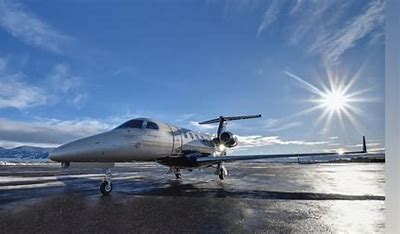Innovations from the Aviation & Robotics Summit Forge a Path for Future Travelers

The 2024 Aviation Robotics Summit, as detailed in a recent overview by BlueSkyPIT.com, emerged not just as a gathering, but as a beacon for the future of air travel. Hosted in a bid to redefine the boundaries of what’s possible in the aviation sector, this summit has become a pivotal platform for innovators, engineers, and industry leaders.
Exploring the Summit’s Vision
The summit’s agenda was heavily focused on integrating robotics into the aviation industry, not just to enhance efficiency, but to revolutionize the traveler experience. Discussions ranged from automated check-ins to advanced baggage handling systems, showcasing a future where travel is smoother, faster, and more enjoyable.
Experts from across the globe delved into how robotics could be leveraged to improve safety and reliability in air travel, emphasizing the dual benefits of reducing human error and improving operational efficiency. The convergence of robotics with AI and big data was highlighted as a game-changer, offering predictive maintenance for aircraft and personalized travel experiences for passengers.
At the outset of the summit, Pittsburgh International Airport CEO Christina Cassotis revealed that one of the prototypes developed in the workshops will be chosen for commercial development, supported by a $75,000 contribution from the Henry L. Hillman Foundation. This selected prototype could emerge from any of the innovative ideas introduced during the workshops.
Innovations on the Runway
The presentations at the summit offered a glimpse into a world where drones are integral to aircraft maintenance, conducting inspections quickly and with pinpoint accuracy. The potential for robots in enhancing security measures was also discussed, theorizing a near future where security protocols are automated to be tighter yet less invasive, thanks to robotic assistance.
In one of the workshops, participants proposed the use of LiDAR sensors to detect and communicate the locations of foreign object debris (FOD) to ramp workers, leading to its removal. Another team devised a method employing sensors to expedite the turnaround time for aircraft between flights. Additionally, a group introduced a technological solution aimed at improving the precision of baggage handling.
The application of robotics was envisioned to improve operational and environmental capacities. Initiatives were discussed on how robotics could significantly reduce the aviation industry’s carbon footprint, through more efficient fuel usage and the maintenance of aircraft. Such advancements indicate a sustainable direction for air travel.
Impact on Future Travelers
For the next generation of travelers, the summit painted a picture of increased convenience and efficiency. From the moment of contemplating a trip to the final destination, robotics and AI promise a simpler journey. Imagine automated kiosks that streamline the check-in process, and robotic baggage handlers that ensure your luggage arrives safely and promptly.
Moreover, innovations discussed at the summit promise enhanced accessibility for all travelers, ensuring that airborne travel would be more inclusive than ever before. The integration of robotics is set to enrich the travel experience itself, making it more customizable and responsive to individual needs.
The Road Ahead
As the 2024 Aviation Robotics Summit concluded, the conversations it sparked are only the beginning. The challenges of implementation, regulatory approvals, and ensuring cybersecurity remain significant, but surmountable with collaborative effort.
The summit this year attracted over 100 attendees from around the globe, united by a common objective: to craft solutions addressing some of the most critical challenges faced by the aviation sector. Beyond the immediate innovations, the underlying message of the summit was clear: the fusion of technology and human ingenuity holds the key to solving some of the most enduring challenges in aviation. The journey towards the next generation of air travel is underway, and it promises to be as exciting as the destinations it aims to serve.
Original Article: Blue Sky News



